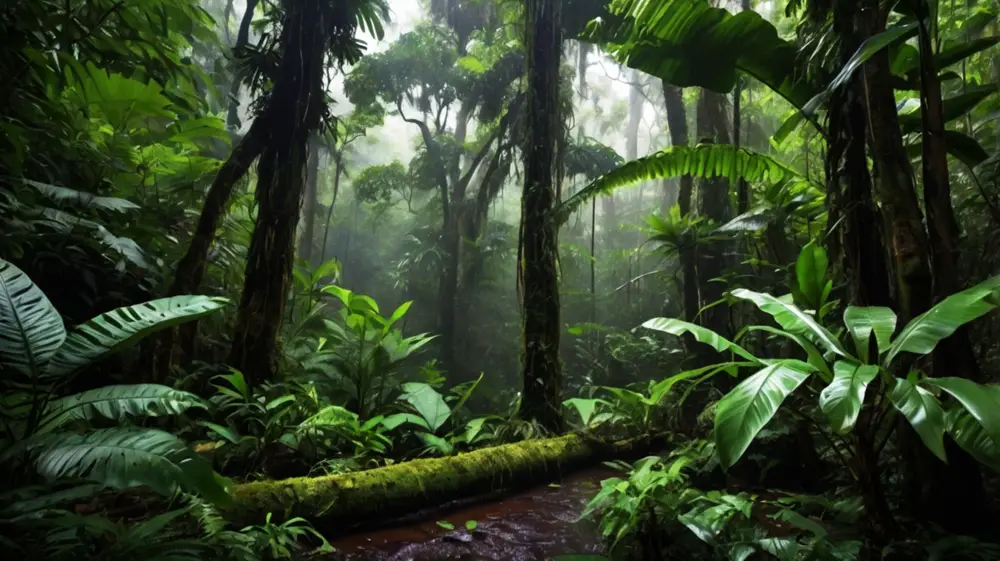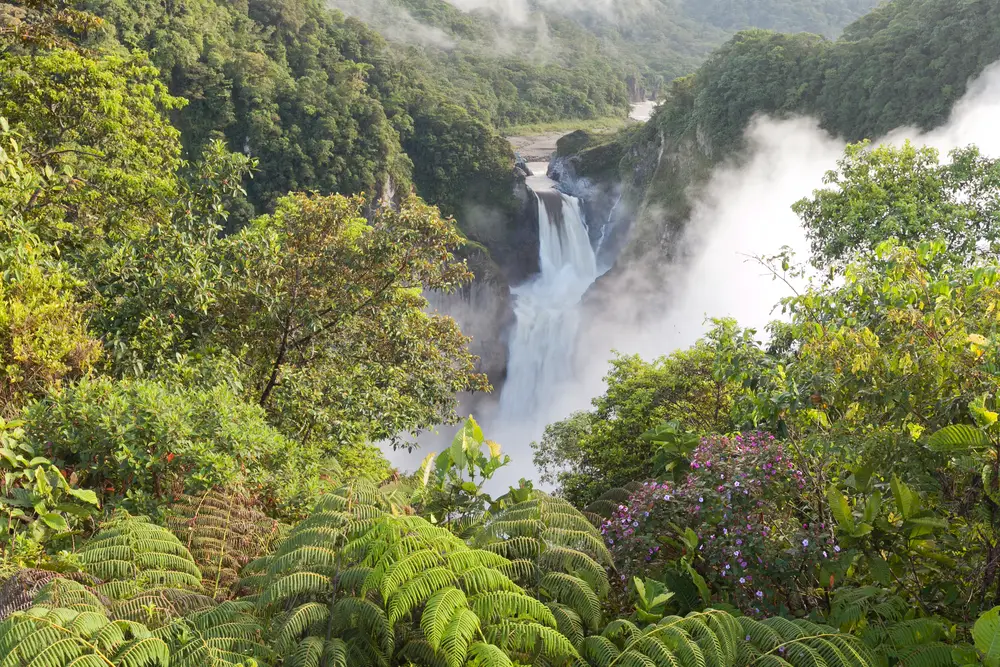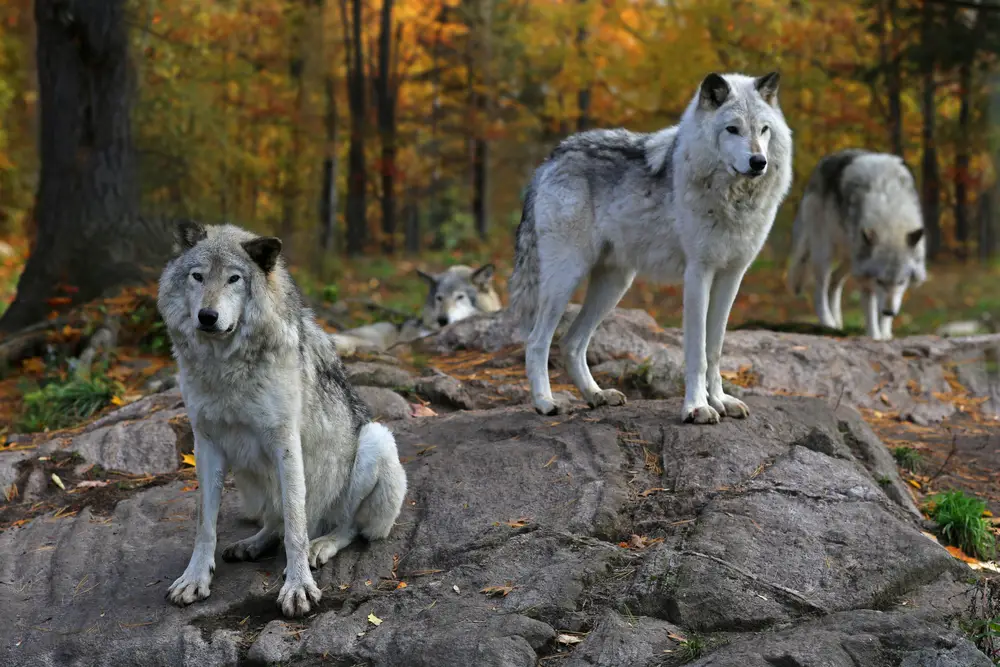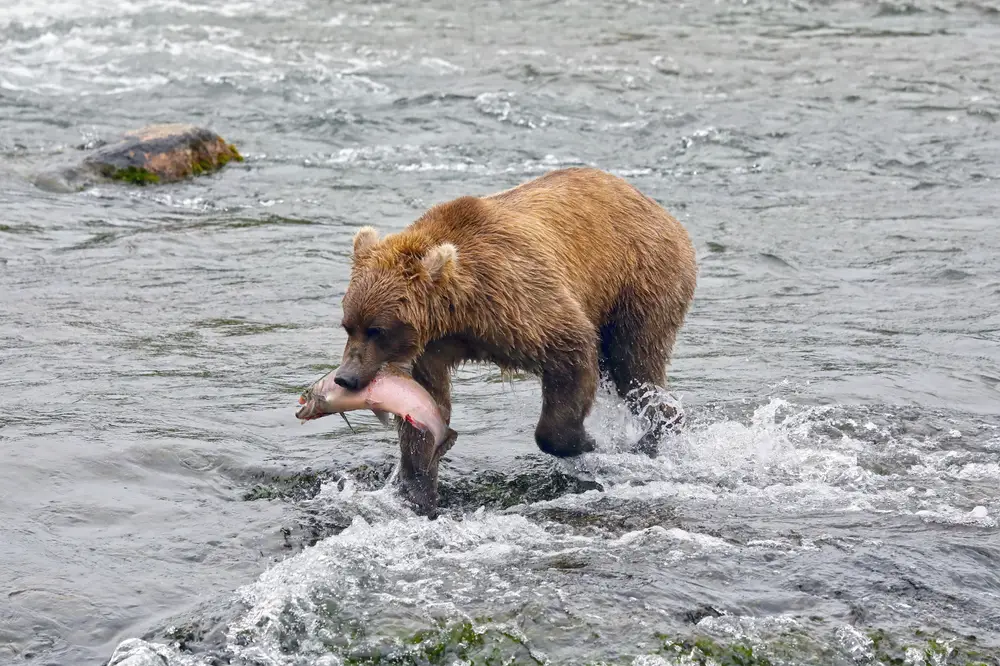When you think about intelligence, you probably picture humans using tools, solving complex problems, or pondering life’s great mysteries. But if you take a closer look at the world around you, you might start to see that Earth itself has some clever tricks up its sleeve. From the intricate ways ecosystems maintain balance to plants communicating in ways we’re just starting to understand, Earth might just be smarter than you’d think. Let’s dig into some surprising signs that this planet knows a thing or two about getting by.
1. Natural Recycling Systems

If you think about recycling, you might imagine sorting plastics and papers into neat bins at home. But Earth’s natural recycling systems are far more sophisticated, managing waste and nutrients in ways that support life. Consider a forest floor, where leaves and dead plants decompose, creating rich soil that fuels new growth. According to Dr. Suzanne Simard, a forest ecologist, trees even use underground fungal networks to share nutrients and balance resources, a process sometimes called the “Wood Wide Web.” These natural systems have been operating smoothly for millions of years, all without human intervention.
This process not only recycles nutrients but also supports a vast array of life, from the smallest microbes to large mammals. It’s as if the Earth has its own cleanup crew that keeps things running smoothly, ensuring that nothing truly goes to waste. This is a system humans have tried to mimic in various ways, yet still struggle to achieve with the same elegance and efficiency. The Earth’s recycling methods are a silent reminder of how much we still have to learn from the natural world. If anything, they underscore the importance of working with nature rather than against it.
2. Self-Regulating Climate Mechanisms

You might not realize it, but Earth has its own built-in systems to regulate climate and maintain a balance that supports life. Ocean currents, for example, act like a giant thermostat, distributing heat around the planet and impacting weather patterns. This natural regulation has been key to sustaining life through countless climate changes over millions of years. It’s an intricate dance of ocean waters, atmosphere, and land that keeps things just right for diverse ecosystems to thrive.
Even volcanic eruptions, which might seem destructive at first glance, have a role in cooling the planet by releasing particles that reflect sunlight away from the Earth. These systems are incredibly complex and interconnected, showcasing a resilience that humans often overlook. While we may be skilled at developing technology to influence climate, the Earth’s natural methods are astoundingly comprehensive. These mechanisms highlight the planet’s ability to adapt and endure, something that humans are still striving to fully comprehend and emulate.
3. Biodiversity As A Resilience Strategy

Have you ever marveled at the sheer diversity of life on Earth? From the tiniest insects to sprawling rainforests, biodiversity serves as the Earth’s ultimate strategy for resilience and adaptability. According to Dr. E.O. Wilson, a renowned biologist, biodiversity is crucial for ecosystem stability and resilience, providing various species with unique roles in maintaining balance. Each species, no matter how small, plays a part in its ecosystem, contributing to its health and stability.
This diversity is what allows ecosystems to adapt to changes, bounce back from disturbances, and continue functioning smoothly. When one species is threatened or goes extinct, others can fill the void, helping to maintain the balance. It’s a strategy that humans have yet to master; instead, we often see monocultures in agriculture, which are far more vulnerable to disease and climate change. Earth’s diverse tapestry of life is a testament to its enduring intelligence, crafted over billions of years of evolution.
4. Natural Water Filtration Systems

Ever considered how Earth’s natural water filtration systems work? Take wetlands, for instance; they act as nature’s kidneys, filtering out pollutants and purifying the water that passes through them. These areas teem with plant and animal life, all working together to clean the water and support life in and around them. Wetlands slow down water flow, allowing sediments to settle and be absorbed by plants and microorganisms. It’s a process that humans have attempted to replicate through water treatment plants but haven’t quite perfected yet.
These natural filtration systems are incredibly efficient and sustainable, providing clean water without any need for human intervention. They underscore the importance of conserving these ecosystems, not just for biodiversity but for their invaluable role in maintaining water quality. With increasing pollution and demand for clean water, these natural systems are more crucial than ever. Preserving them is essential for ensuring a sustainable future, a lesson in humility from the Earth itself. It’s a reminder that sometimes, the best solutions are already in place; we just need to protect and learn from them.
5. Plant Communication Networks

Plants might seem like silent and solitary life forms, but they’re actually quite chatty beneath the surface. Using underground fungal networks, plants can exchange nutrients, warn each other about pests, and even support weaker members of their community. Dr. Monica Gagliano, a plant scientist, has conducted research that suggests plants can even “hear” and respond to sound vibrations. These communications help maintain the health and balance of entire ecosystems, showcasing a level of cooperation and intelligence that humans are only beginning to understand.
This hidden network, sometimes referred to as the mycorrhizal network, is a sophisticated system of interaction and support. It emphasizes the idea that there’s more to plant life than meets the eye, revealing a complex web of connections that enables resilience and growth. While humans often view plants as resources, this insight into their communication networks highlights the intricate and intelligent systems at play. It’s another example of how Earth’s natural systems are more advanced than we might assume. Delving into these networks could provide insights into sustainable agricultural practices and ecosystem management.
6. Symbiotic Relationships

Symbiotic relationships are nature’s way of demonstrating that teamwork makes the dream work. Look at bees and flowers, for example; while bees gather nectar for food, they inadvertently pollinate the flowers, aiding in their reproduction. This mutual benefit is a key component of many ecosystems, showcasing a level of cooperation that helps maintain balance and productivity. Symbiotic relationships extend beyond plants and insects, encompassing a wide range of interactions among different species.
From cleaner fish that eat parasites off larger fish to fungi that help plants absorb nutrients, these partnerships are essential for survival. These relationships highlight the interconnectedness of life on Earth, where cooperation often leads to better outcomes than competition. In a world where humans often prioritize individual success, these natural partnerships remind us of the power of collaboration. They underscore the fact that Earth’s systems are designed with balance and cooperation in mind, providing valuable lessons for human societies.
7. Seasonal Adaptations

Have you noticed how animals and plants adjust to changing seasons without missing a beat? From birds migrating thousands of miles to trees shedding leaves, Earth’s inhabitants have developed ingenious ways to cope with seasonal shifts. According to a study by the National Ecological Observatory Network, these adaptations are crucial for survival and maintaining balance in ecosystems. This ability to adapt to the seasons showcases an inherent intelligence within the natural world.
These adaptations are not just survival tactics but are deeply embedded in the life cycles of countless species. By adjusting to the changing conditions, plants and animals ensure their survival and the continuation of their species. For humans, adapting to seasonal changes often involves technology and planning, but the natural world manages this seamlessly. This adaptability is a testament to the resilience and intelligence of life on Earth, operating in harmony with the planet’s rhythms. It’s a reminder of the intricate balance that exists in nature and the potential lessons it holds for us.
8. The Power Of Photosynthesis

Photosynthesis might seem like a basic process you learned about in school, but it’s a brilliant strategy for harnessing energy. Plants convert sunlight into energy, producing oxygen as a byproduct, which is essential for most life forms on Earth. This process is not only a foundation for life but also a prime example of Earth’s ingenuity in utilizing available resources. Plants have been perfecting this process for millions of years, creating a balance between energy production and consumption.
This efficient energy conversion is something humans strive to emulate through solar technology, though we’re still working to achieve the same level of efficiency. Photosynthesis is a reminder of how Earth’s systems are designed to sustain life by making the most of what’s available. It also highlights the planet’s ability to support complex life forms through simple, yet effective, processes. The elegance of photosynthesis is a testament to the underlying intelligence of Earth’s systems, offering inspiration for sustainable energy solutions.
9. The Role Of Keystone Species

You may not have realized it, but some species play a crucial role in maintaining the balance of entire ecosystems. Known as keystone species, these organisms have a disproportionately large impact on their environment relative to their abundance. For example, wolves in Yellowstone Park help control elk populations, allowing plant life to thrive and supporting a diverse range of species. Removing a keystone species can lead to dramatic changes in an ecosystem, often with negative consequences.
The concept of keystone species illustrates the complexity and interconnectedness of Earth’s ecosystems. It highlights how delicate the balance of nature can be and how every species has a role to play. This understanding emphasizes the importance of preserving biodiversity and protecting these critical species. By recognizing the significance of keystone species, humans can work towards more effective conservation efforts. This insight into the natural world serves as a reminder of the intricate intelligence embedded within Earth’s ecosystems.
10. Natural Pest Control Mechanisms

Nature has its own way of keeping pests in check, often without the need for human intervention. Predators, parasites, and diseases naturally regulate pest populations, maintaining a balance that supports biodiversity. For example, ladybugs feed on aphids, helping to control this common garden pest. These natural pest control mechanisms are effective and sustainable, often outperforming human-made pesticides in the long run.
By relying on nature’s own solutions, ecosystems can maintain their health and productivity without the harmful side effects of chemical interventions. These natural systems are a testament to Earth’s ability to self-regulate and maintain balance. They serve as a reminder that working with nature, rather than against it, can lead to more sustainable outcomes. Embracing these natural pest control methods can provide valuable insights into sustainable agriculture and ecosystem management. This intelligence of Earth’s systems offers a blueprint for coexisting with nature in a harmonious and sustainable way.
11. The Wisdom Of Natural Disasters

Natural disasters might seem purely destructive, but they actually play a key role in shaping and renewing ecosystems. Fires, floods, and storms can help clear out dead vegetation, enrich soil, and create habitats for new species. This process of destruction and renewal is vital for maintaining biodiversity and ecosystem health. While these events can be devastating, they also highlight the resilience and adaptability of life on Earth.
From a human perspective, natural disasters are challenges to be overcome, but they also offer lessons in adaptability and preparation. These events remind us of the power of nature and the importance of respecting its forces. They also underscore the need for building resilient communities that can withstand and recover from such events. Embracing the wisdom of natural disasters can lead to more sustainable and informed approaches to living in harmony with the Earth. It’s a reminder that even in chaos, there is a method to nature’s madness.
12. Efficient Energy Transfers

Have you ever thought about how energy flows through an ecosystem? From the sun to plants, and then to herbivores and carnivores, energy transfer in the natural world is incredibly efficient. Each level of the food chain plays a role in transferring energy, with minimal waste. This efficiency is crucial for sustaining life and maintaining the balance of ecosystems.
While humans often struggle with energy efficiency, nature has perfected it over billions of years. Every organism plays a part in this energy web, contributing to the overall health and sustainability of the ecosystem. The elegance of these energy transfers highlights the intelligence embedded in Earth’s systems. By understanding and mimicking these natural processes, humans can improve their own energy systems and sustainability efforts. It’s a reminder that nature often has the most effective solutions if we’re willing to pay attention and learn from them.
13. The Genius Of Evolution

Evolution is Earth’s way of ensuring that life can adapt and thrive in changing environments. Through natural selection, species develop traits that enhance their survival and reproduction, leading to a diverse array of life forms. This process is incredibly efficient, allowing life to adapt to different challenges and opportunities over time. Evolution highlights the intelligence of Earth’s systems in fostering resilience and adaptability.
While humans often focus on short-term solutions, evolution works on a grand scale, crafting life that can endure and flourish. This process has led to the incredible diversity of life on Earth, with each species uniquely adapted to its environment. It’s a testament to the power of slow, steady change and the importance of adaptability. By understanding evolution, humans can gain insights into resilience and long-term sustainability. It’s a reminder that patience and adaptability are key to thriving in any environment.
14. Natural Water Cycle

The water cycle is a perfect example of Earth’s ability to sustain life through natural processes. Water evaporates from the surface, forms clouds, and returns as precipitation, nourishing plants and animals. This cycle is crucial for distributing water and maintaining the balance of ecosystems. It’s a self-sustaining system that operates efficiently without human intervention.
The water cycle highlights the interconnectedness of Earth’s systems and the importance of maintaining this balance. It’s a reminder of the delicate dance that supports life on our planet. While humans often take water for granted, the natural cycle is a testament to the intelligence of Earth’s systems. It underscores the importance of conserving water and protecting our planet’s natural resources. By appreciating and respecting the water cycle, we can work towards a more sustainable future.
15. Resilience Through Redundancy

Redundancy in ecosystems is nature’s way of ensuring resilience and stability. If one species or system fails, others can step in to fill the gap and maintain balance. This redundancy is evident in biodiversity, where multiple species perform similar roles in an ecosystem. It allows ecosystems to absorb shocks and bounce back from disturbances, showcasing a level of foresight that humans often overlook.
In human systems, redundancy is often seen as inefficient, but in nature, it’s a key strategy for survival. This approach underscores the importance of diversity and adaptability in maintaining stability. It’s a reminder that resilience often comes from having multiple options and pathways to success. By embracing redundancy, humans can build more resilient systems and communities. Learning from nature’s strategies can lead to more sustainable and robust solutions in the face of challenges.
